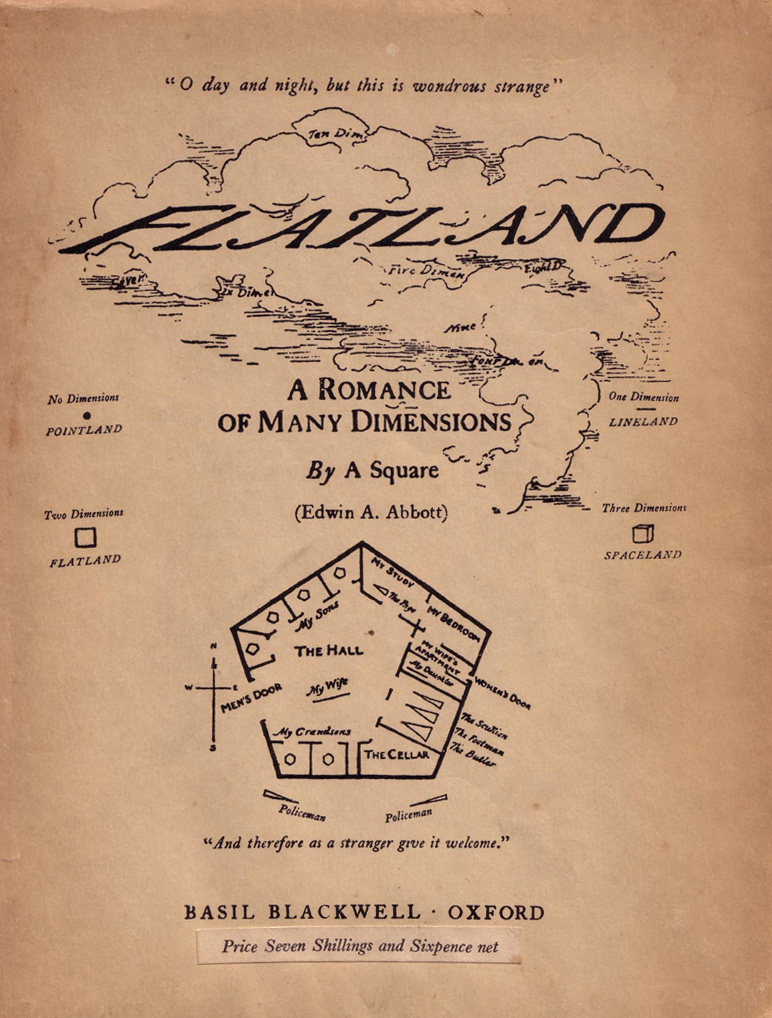Flatland: A Romance of Many Dimensions

Review
Flatland: A Romance of Many Dimensions is a satirical short novel by , critiquing the rigid class hierarchy of Victorian England through the lens of geometry.
Flatland: A Romance of Many Dimensions tells the story of A Square, who is a square living in a two-dimensional world. The first part of the book explains how Square’s world and society work, while the second part chronicles Square’s visits to worlds with different dimensions.
The social commentary is a heavy-handed satire, so much so that even someone with only a passing familiarity with Victorian life can see what they’re satirizing. The primary fact of Flatland society is that your shape, which is determined at birth, dictates your entire life, just as the social hierarchy in Victorian England was largely based on your birth circumstances. In this section, acknowledges one of his inspirations—’s ironic essay A Modest Proposal—by suggesting “that the Irregular offspring be painlessly and mercifully consumed.”
The geometry part of the book—where Square visits Lineland (1D), Spaceland (3D), and Pointland (0D)—is thought-provoking in how it makes you think about geometry. A fun observation is that each N-dimensional being finds (N-1) dimensions trivial, their own N-dimensional world the obvious limit, and (N+1) dimensions inconceivable. When Square works out through induction the existence of 4th and 5th dimensional worlds, his 3D guide—Sphere—rejects it immediately.
After reading, it seems so simple to imagine that I can picture a hypercube just by thinking “Upward, not Northward.” But alas, I’m stuck with my standard method of visualizing N-dimensions: thinking of 3D and repeating to myself “N-dimension, N-dimensions!” over and over again.1
The book is short and the setting is fun. The social commentary is dated, but the geometry part is as fresh and informative as ever.
-
I stole this from someone, but I couldn’t find the source. ↩